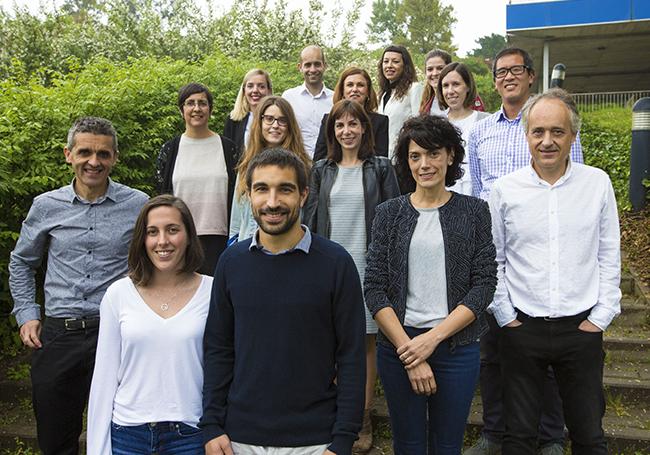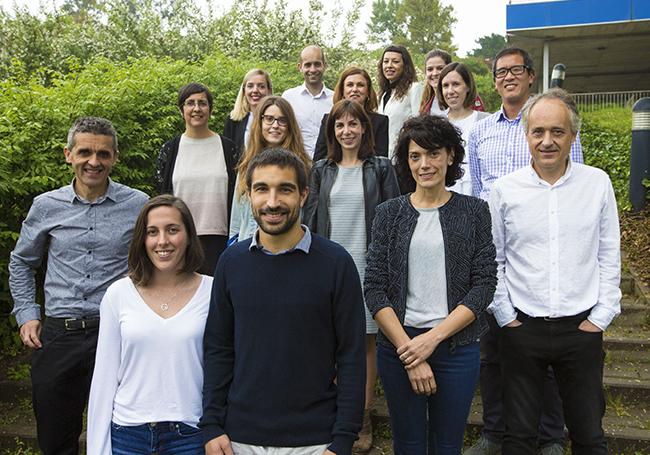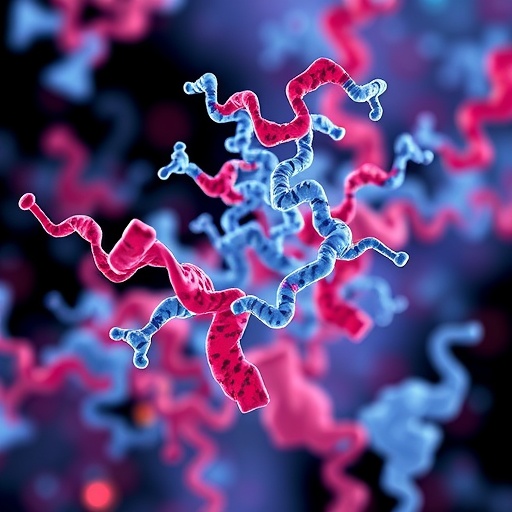
Credit: Egoi Markaida. UPV/EHU
If the number of people over 65 currently accounts for 22% of the total population in the Basque Autonomous Community (region), predictions indicate that this percentage will rise to 30% by 2030. That is why it is important to promote healthy ageing, one of the main backbones of which is health and physical exercise. In fact, during ageing, doing regular exercise may reverse age-related physical deterioration and, at the same time, frailty, a very common syndrome among the elderly and which entails a higher risk of falls, hospital admissions, dependence and even death. This syndrome is more widespread among people living in residential care homes.
In order to improve the life quality of this group, the UPV/EHU's Ageing-On research group led by Jon Irazusta, in collaboration with the Matia Institute, has designed a programme of physical exercise adapted to the capabilities of each individual. Strength, balance and stamina are worked on. The programme is run progressively and the intensities are increased as the capabilities of the people, for whom the adaptations of the body are greater, increase. This makes it pioneering because firstly there are few studies exploring the effects of physical exercise on frailty in this population, and secondly, the programmes do not tend to be adapted to the capabilities of the each individual.
The effectiveness of the programme was analysed in a sample of 112 participants from 10 centres for the elderly. They were randomly divided into two groups: the "control" group that continued with its usual activities and care, and the "experimental" group that did two 45-minute sessions of physical exercise per week designed to improve strength and balance. The time they spent walking was gradually increased until they reached at least 20 minutes a day.
Physical and cognitive improvement
By the first assessments a link was found between greater limb strength, an improved cognitive state and enhanced life quality. In other words, the work designed to build strength, which is often overlooked in elderly people, can be of great help in improving their physical and mental state, in particular among those who use walking sticks, crutches, Zimmer frames or other aids.
After three months, the study showed a significant improvement in most of the physical variables, such as strength, walking speed and balance in the people who were doing physical exercise. By contrast, the people in the "control" group saw a reduction in their physical capabilities.
The results obtained in the SPPB (Short Physical Performance Battery) were particularly significant. These tests are used to measure the degree of frailty and may predict the risk of falls, hospital admittances, dependence or death. Doing physical exercise generated a two-point increase in the SPPB while the result for the "control" group fell by one point. "A difference of a single point on this scale is already regarded as significant; 3 points are a clinically highly significant difference, which points to the effectiveness of the programme. In addition, it is remarkable that those individuals with a worse functional status benefitted from the programme even more. So we can say that the programme is appropriate for anyone as long as they enjoy a degree of cognitive capacity and autonomy allowing them to participate in it", explained Prof Jon Irazusta.
The positive results obtained have been published in the journals BMC Geriatrics, Maturitas and Experimental Gerontology. The Ageing-On research group has also designed a methodology whereby any centre for the elderly can set up an exercise programme developed with the guidelines set out in its research. The group is hoping that the programme will be extended to improve the life quality of elderly people who are in residential care. At the same time they believe that their methodology could also be of use in improving the status of other people, such as those who have recently spent time in hospital, who suffer dementia or other neurological problems and the main carers of dependent people.
###
Additional information
The study into the benefits of physical exercise in elderly people living in residential care homes is part of the thesis by Haritz Arrieta. It is being supervised by Dr Ana Rodriguez and Dr Jon Irazusta, and conducted, in collaboration with the Matia Institute, at 10 different care homes for the elderly (Bermingham, Rezola, Fraisoro, Otezuri, Lamourous, Txara I, Anaka, Betharram [Caser Foundation], Iurreamendi Egoitza and Uzturre Egoitzajarri). The research was conducted under the auspices of the Frailty Corner consortium devoted to conducting research into frailty in the elderly and to seeking solutions designed to improve their life quality. The consortium comprises the UPV/EHU, Matia Institute, Biodonostia Institute, Tecnalia, Tekniker, Cidetec and Vicomtec. The research project of the Ageing-on group has received funding from the departments of Economic Development (Elkartek Programme) and Health (RIS3 Programme) of the Basque Autonomous Community Government, the Chartered Provincial Council of Gipuzkoa and the UPV/EHU.
Bibliographical references
Ana Rodriguez-Larrad, Haritz Arrieta, Chloe Rezola, Maider Kortajarena, Jose Javier Yanguas, Miren Iturburu, María Gil Susana and Jon Irazusta.
Effectiveness of a multicomponent exercise program in the attenuation of frailty in long-term nursing home residents: study protocol for a randomized clinical controlled trial
BMC Geriatrics
https://doi.org/10.1186/s12877-017-0453-0
Haritz Arrieta, Chloe Rezola-Pardo, Iñaki Echeverria, Miren Iturburu, Susana Maria Gil, Jose Javier Yanguas, Jon Irazusta and Ana Rodriguez-Larrad.
Physical activity and fitness are associated with verbal memory, quality of life and depression among nursing home residents: preliminary data of a randomized controlled trial BMC Geriatrics
https://doi.org/10.1186/s12877-018-0770-y
Haritz Arrieta, Chloe Rezola-Pardo, Susana María Gil, Jon Irazusta, Ana Rodriguez-Larrad
Physical training maintains or improves gait ability in long-term nursing home residents: A systematic review of randomized controlled trials
Maturitas
https://doi.org/10.1016/j.maturitas.2017.12.003
Haritz Arrieta, Chloe Rezola-Pardo, Idoia Zarrazquin, Iñaki Echeverria, Jose Javier Yanguas, Miren Iturburu, Susana Maria Gil, Ana Rodriguez-Larrad, Jon Irazusta.
A multicomponent exercise program improves physical function in long-term nursing home residents: A randomized controlled trial
Experimental Gerontology
https://doi.org/10.1016/j.exger.2018.01.008
Media Contact
Matxalen Sotillo
[email protected]
34-688-673-770
@upvehu
http://www.ehu.es
Original Source
https://www.ehu.eus/en/-/ariketa-fisikoak-hobetu-egiten-du-geriatrikoan-daudenen-bizi-kalitatea http://dx.doi.org/10.1186/s12877-018-0770-y





